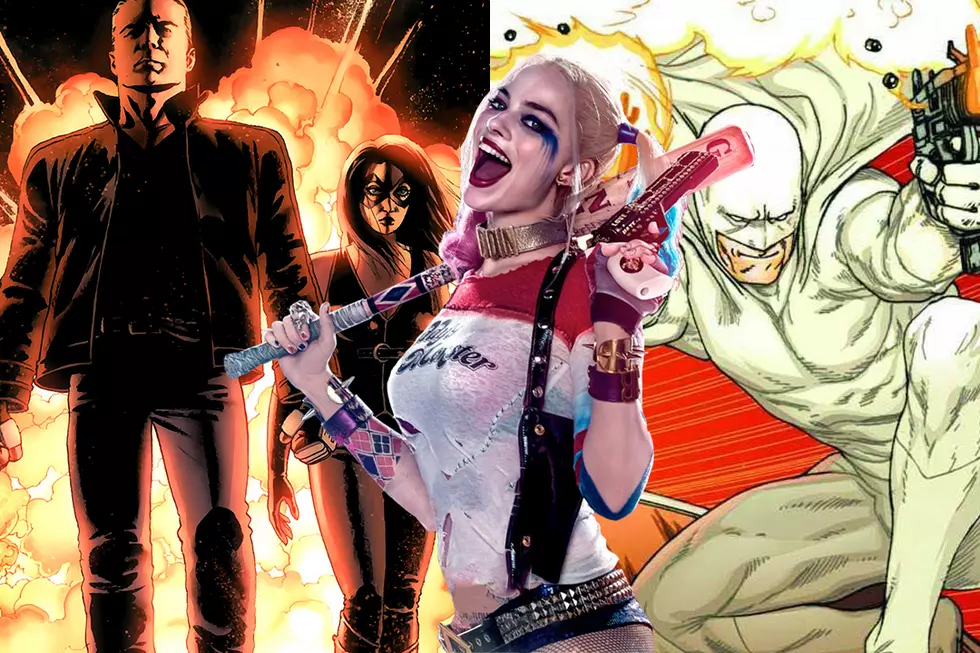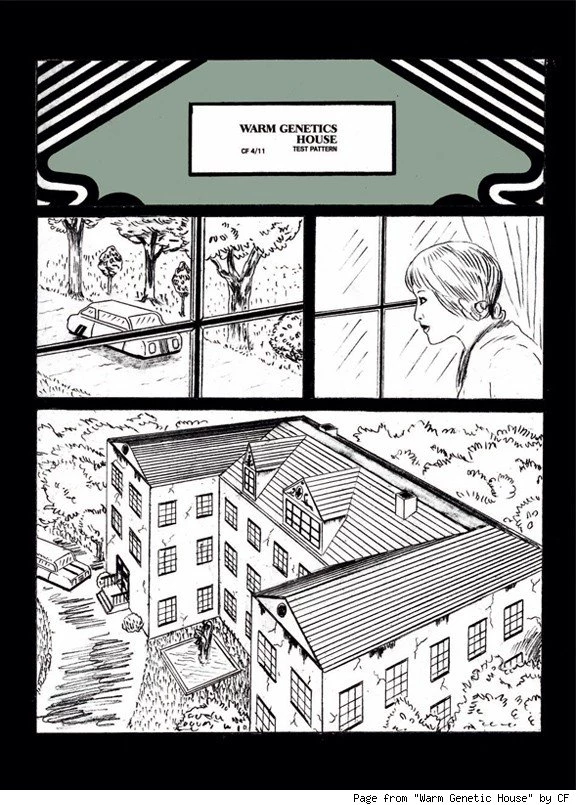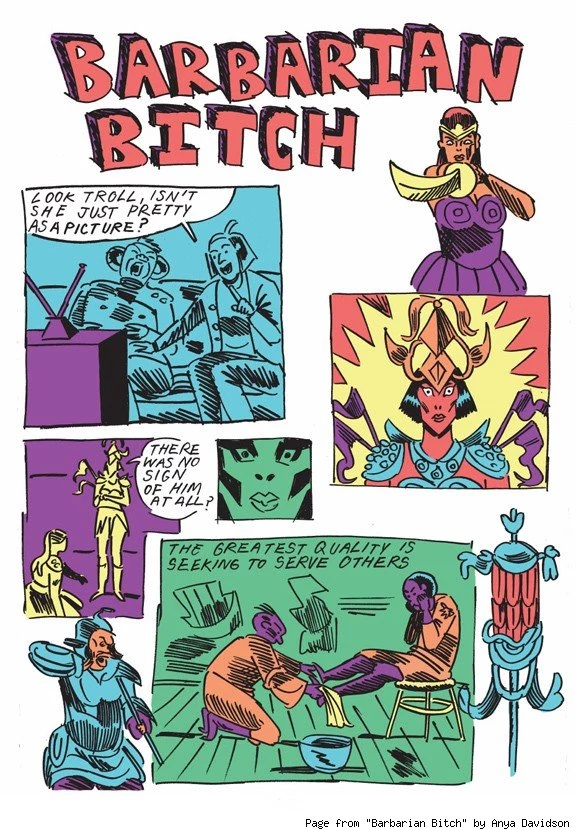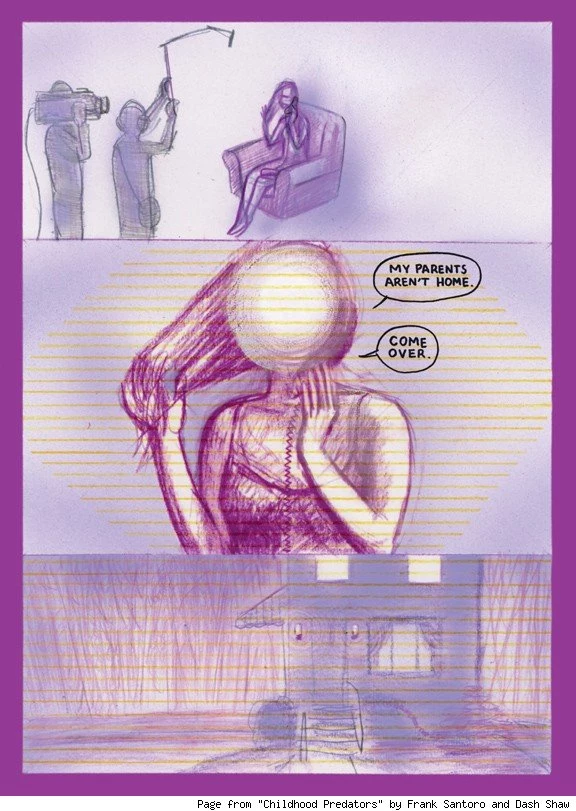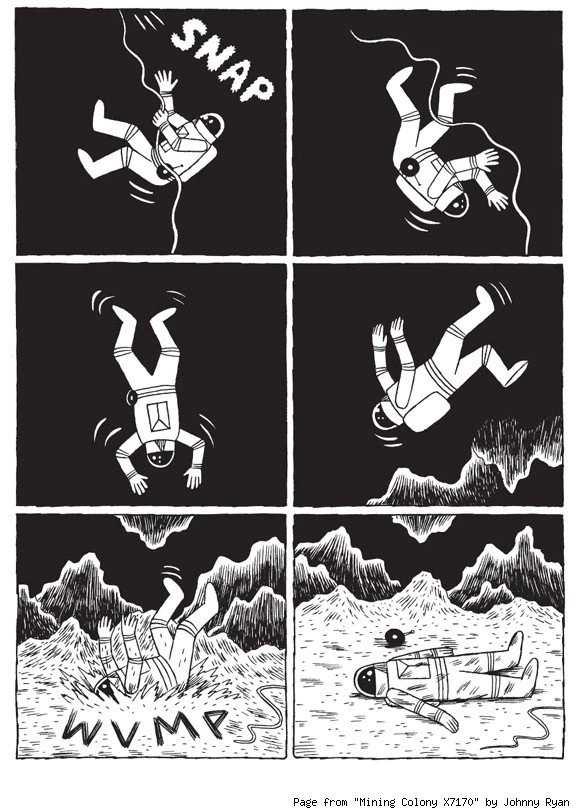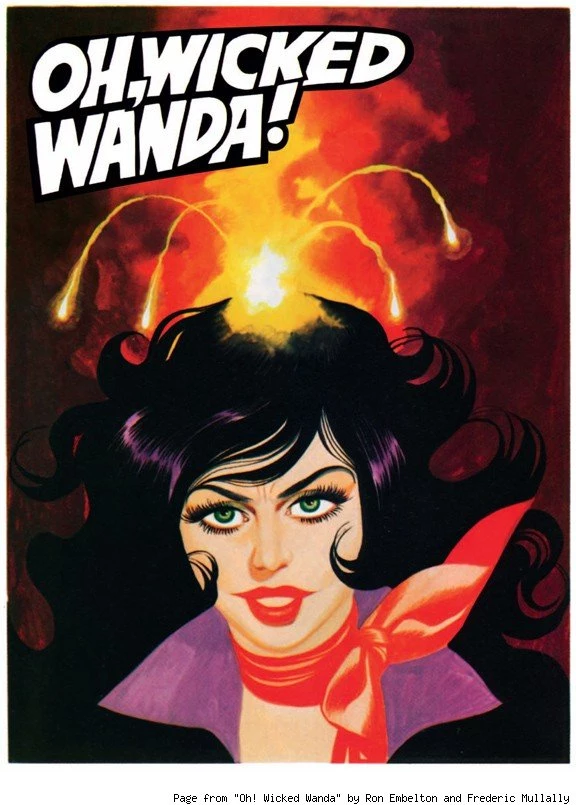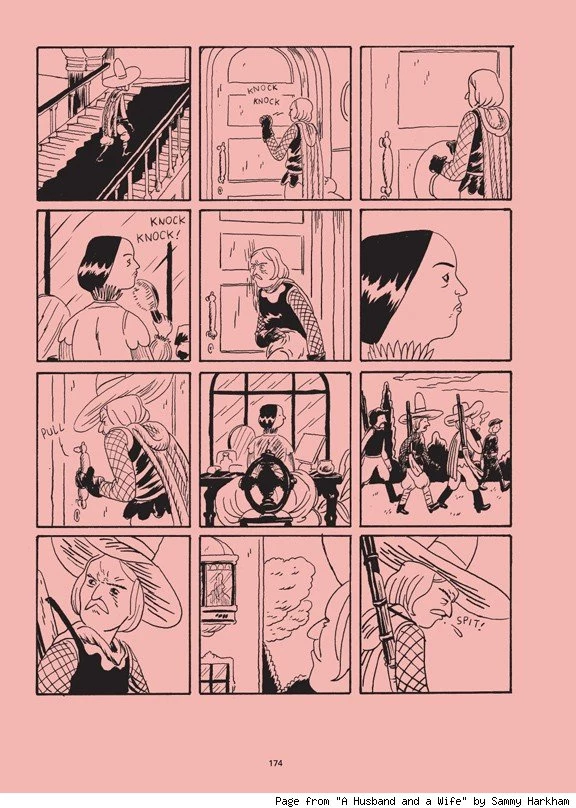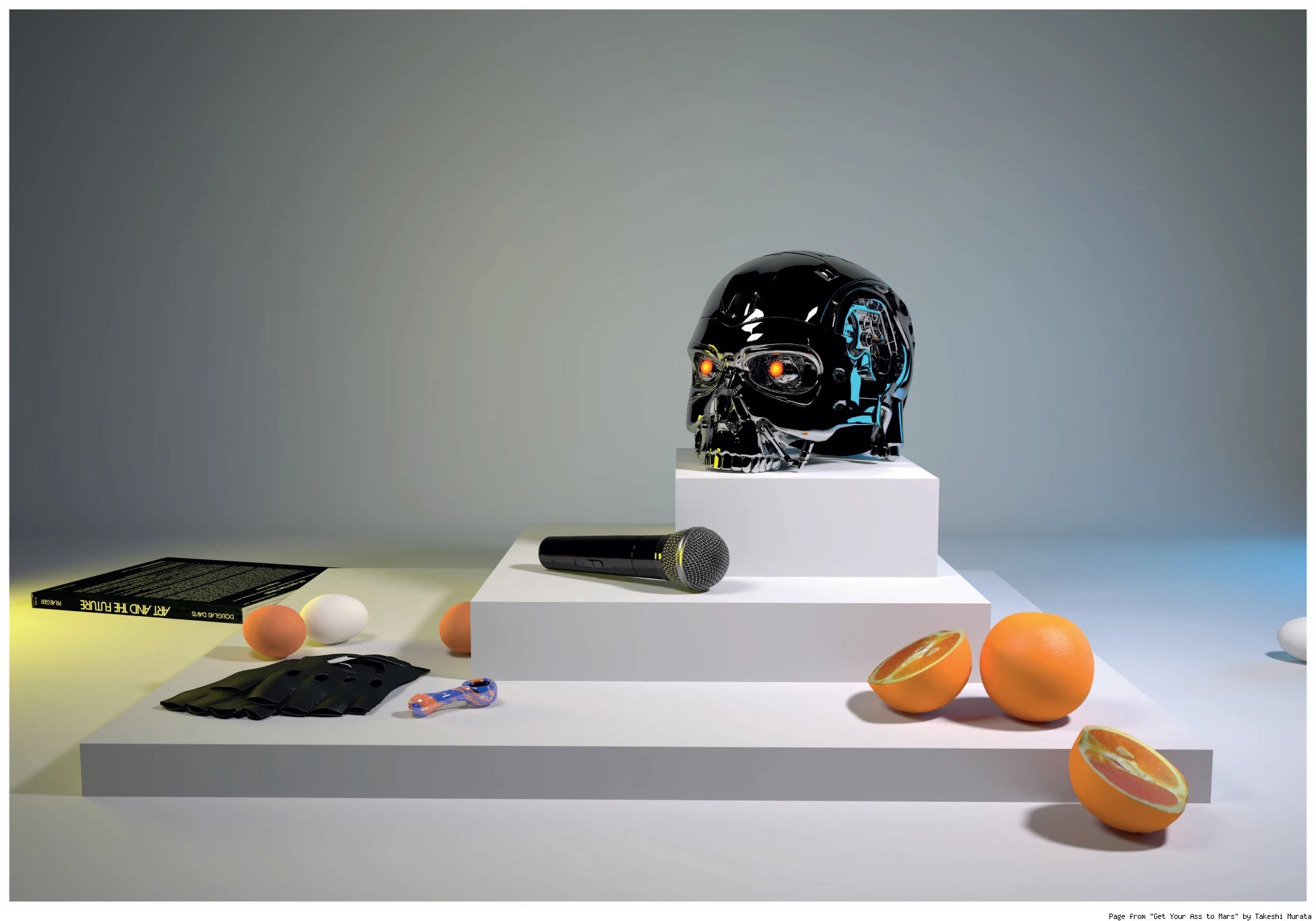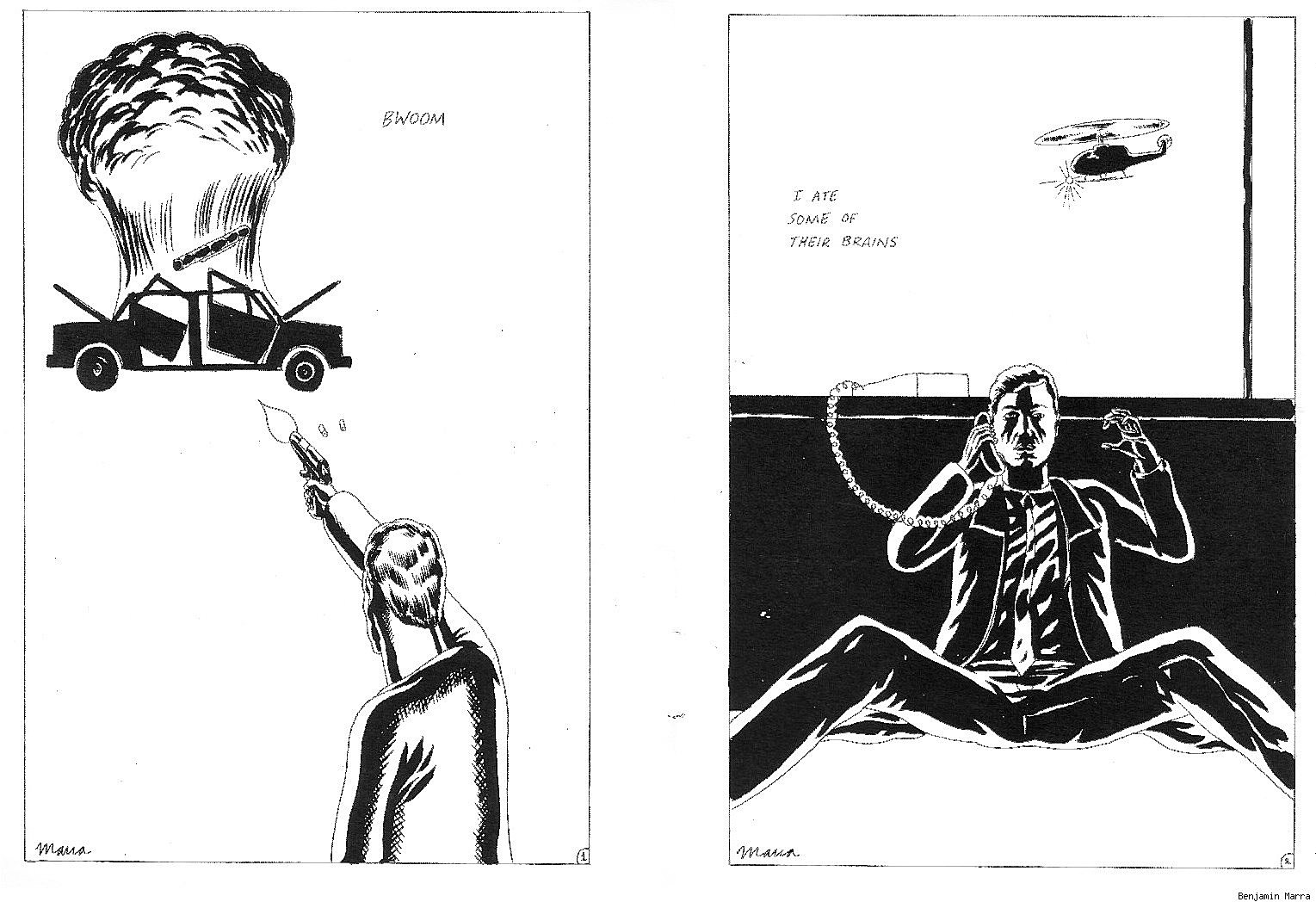
Report from the Brooklyn Comics + Graphics Festival 2011 and a Look at ‘Kramers Ergot 8′

I took a plane from Hollywood across the country to the third annual Brooklyn Comics and Graphics Festival. One weekend. A lot of hassle, a lot of money, a lot of time that could be spent doing much more responsible things. I didn't even have a zine out. My L.A. friends wished me well and my Brooklyn friends bid me welcome and they both went "dude, why?" Because I missed it by a week last year? Because all the people I spend all my time reading and thinking about live on the opposite coast from me? Because it's the only comics show that kicks off with a noise concert? Yes.
So I went to go see my group of friends and talk about not making any money, because it's only at the small shows like these, where people truck in and table up for the sole reason that they love the stuff, that you can hope to maybe find a comic or two that's more than eh-good-enough, better than wait-till-next-week, that makes you forget if-only, if only for a few minutes.Before the show I went to the noise concert and bobbed my head to shimmery and stretching music by CF and Gary Panter, two artists who can both lay reasonable claim to the title of Best Cartoonist Working, and laughed when one of my boyz yelled in my ear that he wished his band was playing instead. I slam danced to former Paper Rad member Jacob Ciocci's electrogrit remixes of Miley Cyrus and the Harry Potter theme music while scene godfathers Frank Santoro and Tom Spurgeon drank the drinks I'd bought them so far back in the back of the room they couldn't see me. Benjamin Marra and Jason Leivian and I ended up in a Williamsburg warehouse with a klatch of indie band guitarists and New York Times writers and English kids and we all talked about the advantages of inking with a Micron pen and Ron Lim's undervalued work on Silver Surfer. Brooklyn had comics fever that night.
The next morning I woke up with clear eyes and no headache and went to the show. A church basement for the first floor and a gymnasium for the second. Color everywhere. Actual attractive people. And the comics, oh, the comics were wonderful. I'd have one of each, please. The fancy-publisher hardcovers guaranteed to land on year-end best-of lists put forth by cultural organs whose prestige outweighs even that of this website. The genre-comics pastiches put together by outsider cartoonists who understand how to make action in panels hit hard and stay close better than anyone getting paid to do so by Marvel or DC (or Image or Dark Horse or Boom! or IDW or Dynamite or Archaia or Blue Water, a curse on all the houses). The objets d'art whose defining conceit was the grid thrown over them or the word balloons they sported, work made with acrylic tubes or spray cans or silk screens or in Blaise Larmee's case a Xerox machine and a mirror, work that only counts as comics because it counts itself as comics, and if you can come up with a better qualifier I'd like to see it. The photocopied minicomics, Kinkos ink on Epson paper folded up by hand and stapled with a Swingline the night before and the night before and the night before because that's what the people making the real stuff do while we're all sleeping.
One of each, please, because this is maybe the only show going with no fat to trim, where every last table has something that doesn't just look cool or sound good but makes a statement and sticks to it, tells you a little speck of something about where comics have been and where they are and where they're going. The day of the Fest, they'd been plenty places and were going plenty more, but for all day, nine hours solid, they were posted right inside that church, two floors at a time.

Kramers Ergot 8 edited by Sammy Harkham, PictureBox
The book of the show was the first one you saw when you walked in, the latest and just maybe the greatest issue yet of Kramers Ergot, which is hands down the most important comics series of the new millennium. It's hardly fair to expect anything else to even compete at a show where a new Kramers comes out: the sheer breadth of editor Sammy Harkham's latest tome, which manages to take a more accurate snapshot of the current climate in other comics than most would even imagine possible, is awe-inspiring. Fragments of the blaring, eternally anarchic Fort Thunder noise-comics aesthetic interweave with work that builds on the same foundation stones as modern mainstream comics and deeply psychedelic passages of pure, beautiful imagery, often within the same story. The seventeen artists whose work makes up the book run the gamut of what falls within comics' purview. Crisp, austere blacks and whites clang off color fields so saturated they seem to almost wet the pages, the drawing moves from wild, freehand mark-making to measured drafting with a single turn of the page, and the stories move effortlessly from post-apocalyptic Kirbyism to cute little rats going to school to a severely disturbing color-damaged adaptation of "To Catch A Predator."
There's nothing else in comics like Kramers, but even within the eight books that make up the series library, there's nothing even close to what this one presents. Where previous volumes focused on breaking down the stultifying conventions decades of comics history had forced upon the form's artists, this new volume, from its textbook-looking cover in, is building the medium its next academy, a new repository of wisdom for future artists to draw from and bend to. Kramers 8 declares the comics of old -- the culture as well as the work -- dead and worse than dead, and puts forth a bold step into a new history, one in which the past remains remembered so that its mistakes will not be repeated.
Like I said, no single comic by a single author could possibly compete with Kramers: but a real discussion of that book deserves more space that it can be given here. Good thing, then, that the massive shadow Kramers cast over the show was shone back into by a number of phenomenal smaller releases, quick and concentrated hits of beauty that speak their own truths, truths like nothing else but they themselves could speak, least of all anything you'd find in the shops on another disappointing Wednesday. Here are only a few of the best.

Hellberta by Michael Comeau, Koyama Press
I wasn't kidding when I said today's art-comix do mainstream better than the mainstream. This beautifully printed, cardstock-covered pamphlet is Exhibit A. First and foremost, it's a deep-continuity Wolverine comic by a creator who understands the character and what makes him work better than any writer to touch the property with Marvel's sanction in years. Comeau nails the combination of grit and pathos behind Canada's favorite superhero from the off, dropping him right into the middle of a white-knuckle adventure that encompasses nationwide conspiracies, deathmatches with Mounties, and the inevitable lovelorn final showdown with Dark Phoenix before climaxing in a symbolically charged resurrection and Wolverine conceiving something that looks quite a bit like the Antichrist with a wild deer.
There's the same amount of Gary Panter as Chris Claremont in Hellberta: the pages are as much ripped apart with ink as drawn, printed in an eye-searing combination of raw red and staticky black on hi-liter yellow paper. Figures emerge from the waves of markmaking like hallucinations, the frenetic tone of the drawings carry the blisteringly fast pace along when Comeau's grasp of anatomy is eclipsed, and panel after panel ups the ante of the previous ones, elevating Wolverine from comic book stalwart to punk rock back-patch hero to religious icon in the course of a single story. It's superheroes as you wished they could be when you drew them bulging and vein-surfaced on your binder as a middle schooler, but it takes an artist of Comeau's skill and vision to reveal that there's more value to that glorious adolescent vision of the idiom than the stuff the corporations who try to control these ideas are pumping out. There's nothing else like this one, folks.

Comics by Jonny Negron, as seen in Chameleon #2, Mould Map #2, and Study Group Magazine #1, published by Mission Risoplex/Landfill Editions/Study Group Comic Books
Beside "Kramers eight," the two words burning off everyone's tongue at the Fest were "Jonny Negron." Negron hit the comics underground like a hurricane this year, matching fascinatingly elliptical, often disturbing, always highly literate stories to an overwhelming drawing style pulled from all over the map. Shards of CF's stark simplicity mix with big pull quotes from R. Crumb's robust physicality and Yuichi Yokoyama's bold design sense, all coated in the thick gloss of classic '80s and '90s anime. Negron had shorts in three incredible anthologies released at the Brooklyn show, and each of them showcased a different side of his monstrous talent.
In Chameleon (an anthology he also co-edited with the similarly gifted Jesse Balmer), Negron delivered a no-holds barred action throwdown, with a dead ringer for Michael Jackson in the "Thriller" video getting pulled into a "Street Fighter" style side-scrolling mêlée, throwing chain-whips and chest-punches with abandon, and finishing the fight by ripping out an assailant's intestines with his bare hands. The Study Group piece is quieter but equally virtuosic, a heroin-dusted story of long-dead romance that also manages to give God's creation of the world a stunning, visual treatment that's awe-inspiring and erotic in equal measure. Finally, the Mould Map piece is Negron foregoing narrative and peeling caps with berserker focus, a single tabloid-sized cutaway page depicting an orgy that takes place over the entirety of a massive mansion, walls as panel borders, sizzling colors so hot they almost vaporize on contact with the air.
Negron is a completely unique voice in comics at the moment, one who can seemingly do anything but who no one has quite figured out yet for all that. It isn't often an artist comes along who seems equally capable of drawing the next New York Times bestseller graphic novel or walking onto a flagship superhero title, but even that's selling Negron short. Better to simply say it isn't often someone makes comics this good.
Blast Furnace Funnies by Frank Santoro, Carnegie Museum of Art
Frank Santoro is a massive presence on the alternative comics scene, a bonafide All Time Great who still cares enough about the medium to stay fully engaged with what the kids are doing. It's been a good while since he last had a book out, though, so seeing the newspaper-format comic he created for an exhibition at the Carnegie Museum in his native Pittsburgh earlier this year finally available for purchase outside the Steel City was a huge treat.
It's easy to understand why Santoro kept this beautiful piece of work confined to its city of origin for so long, however. Colored in wistful shades of rose and canary, swimming in layer upon layer of impressionistic gray linework, and narrated in a steady prose voice that deftly builds up the virtuosic phrasing and counter-phrasing of great jazz playing, it's a stunningly heartfelt homage to Santoro's hometown and family roots, a truly poetic comic that manages true tenderness while always hitting hard. Each panel is a canvas in and of itself, but the flow of the story is unstoppable. Frames whisk by like landscapes seen from train windows, traces of color and line bleeding out of one here, into another there. The story is so absorbing and such a consummate pleasure to read that it's easy to fold over the final sheaf of newsprint before fully feeling its devastating emotional impact. Here Santoro, always one of comics' great picture-makers, reaffirms his status as one of the great practitioners of the American short story in any medium.
Drawings Inspired by the Motion Picture "American Psycho" #1-4 by Benjamin Marra, Traditional Comics
Ben Marra has been the single most important artist of action comics going for a few years now, and the new issue of his slashers 'n' strippers series Night Business that came out at the Fest only strengthens his case as the modern era's heir to the comics-about-fighting throne. Much as his work outclasses Avatar and outguns Marvel, though, Marra has an equally strong affinity for the avant-garde, and his truly bizarre quasi-adaptation of everyone's favorite Christian Bale movie (what) shows off the more uncompromising side of what's already a rock hard aesthetic.
Spread across four separate Xeroxed 'zines, this homage to "American Psycho" pulls image after indelible single image from the film, runs them through the meat grinder of Marra's inimitable drawing style, and presents them free of narrative one to a page. Captioned by dialogue from the film that floats free and out of context over the pictures, the combined weight of these disconnected images create a viewing experience that's both more alienating and horrifying than watching the film itself.
But the real story here is Marra's art, which is far and away the best work of his career. Free of the demands placed on it by story, Marra's compositional sense runs absolutely wild, filtering everything from Kirby to classical painting to Black Flag gig flyers into a stark, streamlined, utterly arresting whole. These pictures seem almost mathematically calculated to haunt the eyes they meet: whether it's the sublimely balanced blacks and whites or the point-of-impact axe to neck shots, something here is bound to stick in the mind long after the 'zines are put away.
Not a bad way to describe this year's Brooklyn Comics Fest as a whole, come to think of it.
More From ComicsAlliance
![I’m A Maniac For Flavour! ‘All-Time Comics’ Taps Into Old-Time Ad Nostalgia [Exclusive]](http://townsquare.media/site/622/files/2017/03/atcads_featured1.jpg?w=980&q=75)
